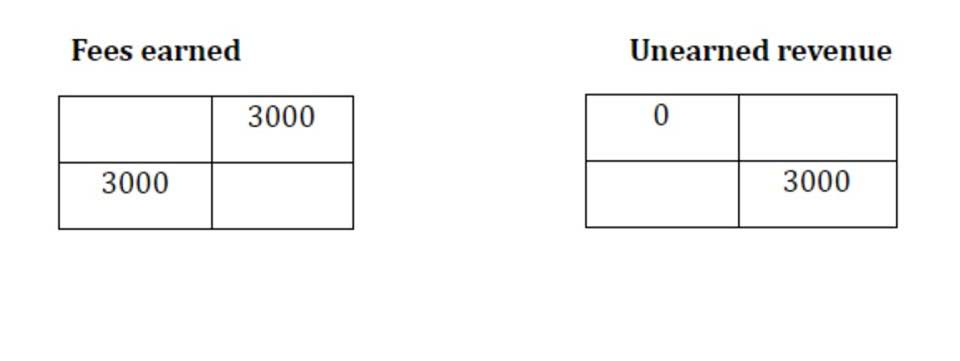
One objective of the adjusting entry is to match the proper amount of insurance expense to the period indicated on the income statement. Prepaid expenses are also known as prepaid assets because they represent the value of the goods or services that will be received in the future. Prepaid assets are different from prepaid cards or prepaid debit cards, which are payment methods that allow you to spend money that you have already loaded onto the card. Prepaid cards are not considered as assets, because they do not have future economic benefits. The debit balance indicates the amount that remains prepaid as of the date of the balance sheet.
- HighRadius stands out as an IDC MarketScape Leader for AR Automation Software, serving both large and midsized businesses.
- Prepaid expenses, or Prepaid Assets as they are commonly referred to in general accounting, are recognized on the balance sheet as an asset.
- However, the premiums may be marginally higher to account for inflation and other operating factors.
- In each of the successive months, equal parts insurance will continue to be credited from the prepaid insurance account.
- IFRS’s flexibility may lead to variances that companies need to manage carefully to ensure stakeholders understand the financial statements’ implications.
Creating a Comprehensive Fixed Assets Management Policy

Explore why HighRadius has been a Digital World Class Vendor for order-to-cash automation income summary software – two years in a row.
- These expenses are recorded as assets on the balance sheet because they have future economic benefits.
- The initial entry debits the prepaid insurance account and credits cash or accounts payable, reflecting the outflow of funds.
- Prepaid insurance policies are commonly used in the business world, particularly by companies that want to manage their risks and protect their assets.
- Although being a simple concept, it is important for an organization to correctly account for and recognize prepaid expenses on its balance sheet.
- When they aren’t used up or expired, these payments show up on an insurance company’s balance sheet.
Accounts Receivable Solutions
But if a prepaid expense is not consumed within the year after payment, it becomes a long-term asset, which is not a very common occurrence. The payment of the insurance expense is similar to money in the bank—as that money is used up, it is withdrawn from the account in each month or accounting period. Prepaid assets include various categories, each with unique characteristics and implications for financial reporting. One common type is prepaid insurance, where companies pay premiums in advance for coverage over a specified period. For instance, a business might pay $12,000 for a one-year insurance policy, recording $1,000 as an expense each month under Generally Accepted Accounting Principles (GAAP).

The Adjusting Entry at the End of the Period
- The balance on the insurance expense account is 5,400, the full cost for the eighteen month period of the policy.
- Passing adjustment entries to balance the books of accounts is often helpful, preventing one from making an entry for new business transactions.
- Mostly, these expenses, if prepaid, are utilized within the course of the forthcoming year only.
- At the end of each month, the company usually make the adjusting entry for insurance expense to recognize the cost of that has expired during the period.
- A premium is a regular, recurring payment made to a provider for the benefit of having insurance coverage.
- Assume that on December 1, a newly formed company pays $600 for insurance coverage for the six months ending on June 1.
The payment is entered on November 20 with a debit of $2,400 to prepaid insurance and a credit of $2,400 to cash. As of November 30, none of the $2,400 has expired and the entire $2,400 will be reported as prepaid insurance. A prepaid expense is an expenditure that a business or individual pays for before using it.
When do prepaid expenses hit the income statement?
Chartered accountant Michael Brown is the founder and CEO of Double Entry Bookkeeping. He has worked as an accountant and consultant for more than 25 years and has built financial models for all types of industries. He has been the CFO or controller of both small and medium sized companies and has run small businesses of his own.
Amortization of Prepaid Assets
By leveraging HighRadius’ Record to Report (R2R) suite organizations can automate prepaid insurance journal entry management, reducing manual prepaid insurance is errors and enhancing efficiency. An insurance premium is an amount that an organization pays on behalf of its employees and the policies that a business has rendered. The expense, unexpired and prepaid, is reported in the books of accounts under current assets. Prepaid insurance is usually considered a current asset, as it becomes converted to cash or used within a fairly short time.
Current ratio

Rather than maintaining a separate Prepaid Insurance Account, organizations can also record prepaid insurance in the insurance expense account. When an individual does not use the premium money paid during the year, the insurance company adds the sum into its balance sheet as a current asset. If the sum is used within the period, the expense is added into the insurance company’s income statement as an expense. The company usually purchases insurance to protect itself from unforeseen incidents such as fire or theft. And the company is usually required to pay an insurance fees for one year or more in advance. In this case, it needs to account for prepaid insurance by properly making journal entries in order to avoid errors that could lead to misstatement on both balance sheet and income statement.

What are the adjusting entries for prepaid insurance? (Example and Explanation)
The adjusting journal entry is done each month, and at the end of the year, when the prepaid expense has no future economic benefits, the prepaid expense balance would be zero. On July 1, the company receives a premium refund of $120 from the insurance company. The company records the refund with a debit to Cash and a credit to Prepaid Insurance. At December 31, the balance in Prepaid Insurance will be a credit balance of $120, consisting of the debit of $2,400 on January 1, the 12 monthly credits of $200 each, and the $120 credit on July 1. Prior to issuing the December 31 financial statements, the company must remove the $120 credit balance in Prepaid Insurance by debiting Prepaid Insurance and crediting Insurance Expense. At the end of twelve months, the asset account would show a balance of zero for the insurance premium and Coffee Shop Accounting a total of $12,000 in the insurance expense account.
Transition to Insurance Expense
Prepaid expenses (a.k.a. prepayments) represent payments made for expenses which have not yet been incurred or used. In other words, these are “advanced payments” by a company for supplies, rent, utilities and others, that are still to be consumed. However, since now interest expense is a part of the income statement, the journal entry will now affect the current asset section of the balance sheet, as well as the expense section of the income statement. A prepaid expense by definition is an expense that has been paid for by the business in advance, that is, before the services for that expense have been availed. As the business begins to use the service, the expense begins to accrue, and the prepaid amount gets deducted accordingly. The reason as to why Prepaid Insurance is treated as a Current Asset is primarily because of the fact that the benefits against prepaid insurance are supposed to be utilized within a shorter timeline.